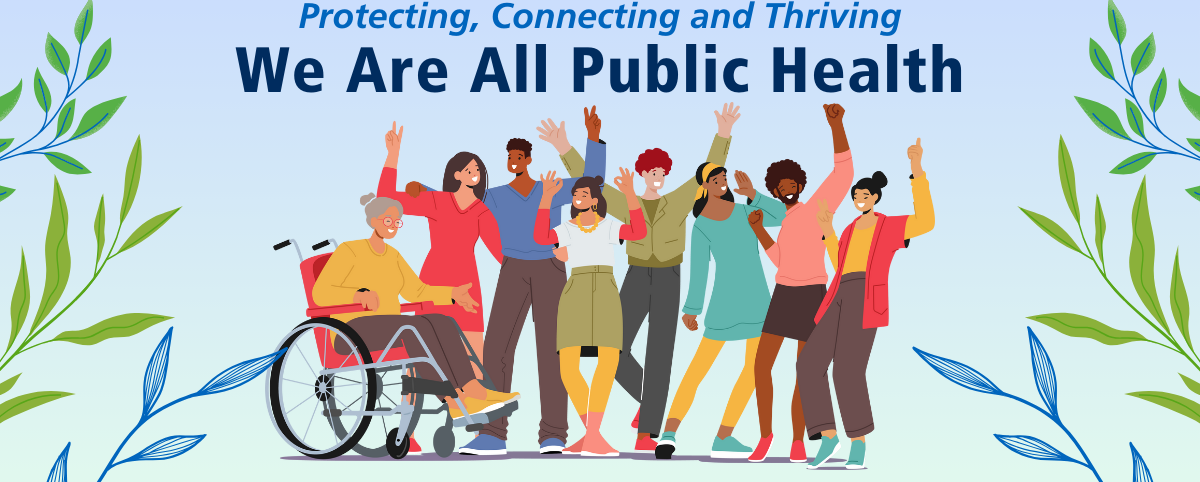Una sección especial examina los efectos que genera el calor extremo sobre la salud y los riesgos desproporcionados para determinados grupos de la población
(Washington, DC – 14 de marzo de 2024) – El informe de “Ready or Not 2024: Protección de la Salud Pública Ante Enfermedades, Catástrofes y Bioterrorismo,” publicado hoy por Trust for America’s Health, identifica las principales fallas en la preparación nacional y estatal respecto a la protección sanitaria de los residentes durante situaciones de emergencias y hace recomendaciones para mejorar la preparación de la nación ante emergencias.
A medida que el país experimenta un número creciente de brotes de enfermedades infecciosas y fenómenos meteorológicos extremos, el informe concluye que, si bien la preparación para emergencias ha mejorado en algunas áreas, las autoridades responsables en este tipo de políticas no tienen en cuenta las lecciones de emergencias pasadas, los recortes de financiación y la desinformación sanitaria están poniendo en peligro décadas de progreso en la preparación de la salud pública.
Basándose en nueve indicadores, el informe clasifica a los estados y al Distrito de Columbia en tres niveles de preparación: alto, medio y bajo. El informe de este año sitúa a 21 estados y al Distrito de Columbia en el nivel de rendimiento alto, a 13 estados en el nivel de rendimiento medio y a 16 estados en el nivel de rendimiento bajo.
A medida que el país experimenta un número creciente de brotes de enfermedades infecciosas y fenómenos meteorológicos extremos, el informe revela que, si bien la preparación para emergencias ha mejorado en algunas áreas, los responsables políticos que no tienen en cuenta las lecciones aprendidas de emergencias pasadas, los recortes de financiación y la desinformación sanitaria están poniendo en peligro décadas de progreso en la preparación de la salud pública.
Nivel alto – 21 estados y DC
AL, AZ, CO, CT, DC, FL, GA, KS, MA, ME, MS, NC, NE, NJ, OH, PA, RI, SC, TN, VA, VT, WA
Nivel medio – 13 estados
AR, DE, IA, ID, IL, MD, MO, MT, NH, NM, OK, UT, WI
Nivel bajo – 16 estados
AK, CA, HI, IN, KY, LA, MI, MN, ND, NV, NY, OR, SD, TX, WV, WY
El informe está diseñado para proporcionar a los responsables políticos datos y puntos de referencia para mejorar la preparación de sus jurisdicciones mediante una inversión nueva y sostenida en infraestructuras de salud pública, sistemas de datos modernos, un personal de salud pública más numeroso y diverso, la colaboración entre los sistemas de salud pública y de atención sanitaria, así como la capacidad de ambos sistemas para generar una pronta respuesta ante emergencias. Otras áreas de responsabilidad del sistema de salud pública son la mejora del acceso a las vacunas y el control de la seguridad de los sistemas municipales de abastecimiento de agua.
La Dra. J. Nadine Gracia, presidenta y CEO de Trust for America’s Health comenta, “Este informe subraya la necesidad de una inversión integral a nivel de infraestructura y preparación de salud pública, destacando la importancia de los efectos desproporcionados tras la falta de inversión en el sector de la salud pública en comunidades de color y otros grupos que han sido igualmente desatendidos y marginados.” Las recientes emergencias de salud pública, desde los incendios forestales hasta los brotes de enfermedades infecciosas, no sólo revelan la necesidad imperiosa de un sistema de salud pública modernizado, sino que también expone el vínculo intrínseco entre la salud general de una comunidad y su capacidad de resistencia durante una emergencia. Es primordial enfocarse en eliminar las disparidades sanitarias y avanzar en el tema de la equidad sanitaria, para lograr frenar el aumento de las enfermedades crónicas y mejorar la preparación de la nación ante las emergencias.”
La sección especial del informe analiza los crecientes riesgos para la salud derivados del calor extremo, incluso para grupos de población concretos: personas que viven en comunidades con pocos recursos, personas que viven en islas de calor urbanas o sin aire acondicionado, personas que trabajan al aire libre, personas con enfermedades crónicas, embarazadas, bebés, niños y adultos mayores. En el 2022, murieron más personas en Estados Unidos a causa del calor extremo que por cualquier otro tipo de fenómeno meteorológico.
El reporte presenta tanto los hallazgos en el área en las áreas fuertes del sistema de preparación de emergencia en el tema sanitario nivel nacional y aquellas áreas que requieren atención:
Entre los ámbitos en los que se han obtenido buenos resultados figuran los siguientes:
- La mayoría de los estados han hecho preparativos para ampliar la capacidad de los laboratorios sanitarios y de salud pública en caso de emergencia. A finales de 2023, 39 estados participarán en el Pacto de Licencias de Enfermería, que ayuda a facilitar los esfuerzos de respuesta ante emergencias al permitir que los enfermeros trabajen en varios estados miembros, tanto en persona como a través de la telesalud, sin necesidad de licencias estatales adicionales. Además, 46 estados y el Distrito de Columbia cuentan con planes escritos para la ampliación de los servicios de laboratorio de salud pública durante las emergencias sanitarias.
- La mayoría de los estados (43) y el Distrito de Columbia están acreditados en las áreas de salud pública o gestión de emergencias, y muchos están acreditados en ambas.
- La mayoría de los estados (al menos 37) y el Distrito de Columbia mantuvieron o aumentaron su financiación de la salud pública durante el año fiscal 2023. La inversión estatal en salud pública es particularmente importante porque la mayor parte de la financiación federal en respuesta a la pandemia de COVID-19 fue temporal, financiación de una sola vez.
Las áreas que necesitan atención incluyen:
- Muy pocas personas se vacunan contra la gripe de temporada. Durante la temporada de gripe del 2022-2023, sólo el 49% de la población (a partir de los 6 meses de edad) se vacunó contra la gripe, muy por debajo del objetivo del 70% establecido por Healthy People 2030. Esta situación resulta ser preocupante para los expertos en salud pública, ya que la desinformación sobre la vacuna COVID-19 pueda estar afectando a la aceptación de otras vacunas.
- Aproximadamente sólo el 25% de los hospitales en condiciones severas en los estados, obtuvieron una calificación de máxima calidad en seguridad del paciente en otoño de 2023. Las puntuaciones de seguridad de los hospitales miden el rendimiento en cuestiones como las tasas de infecciones relacionadas con la atención sanitaria, la capacidad de cuidados intensivos y una cultura general de prevención de errores, todas ellas fundamentales para rendir al máximo durante las emergencias sanitarias.
- En promedio, solo el 55% de los trabajadores estadounidenses utilizaron tiempo libre remunerado durante el período comprendido entre marzo de 2018 y marzo de 2023. El acceso a tiempo libre remunerado es una medida importante de preparación porque los trabajadores que van a trabajar enfermos corren el riesgo de propagar infecciones en la fuerza de trabajo y en toda la comunidad.
Se necesita el implemento de ciertas políticas:
El informe contiene recomendaciones para acciones políticas en los sectores público y privado que crearían una preparación de salud pública más fuerte, incluyendo:
- El Congreso debería mejorar y modernizar la infraestructura de salud pública invirtiendo 4.500 millones de dólares al año para apoyar las capacidades básicas de salud pública a nivel federal, estatal, tribal, local y territorial, incluyendo inversiones en sistemas de datos y en el personal de salud pública.
- El Congreso debe concederle autonomía a los CDC y al Departamento de Salud y Servicios Humanos (HHS) de EE. UU. para recopilar datos de salud pública de manera oportuna y coordinada, en todas las jurisdicciones para garantizar la recopilación y notificación de datos oportuna, completa y desglosada. Todo esto ejecutado de manera conjunta, permitirá una detección y respuesta más rápida y eficaz a las emergencias sanitarias.
- Los responsables políticos deben dar prioridad a recuperar la confianza en los organismos y líderes de salud pública. Las decisiones políticas en materia de salud pública deben basarse siempre en los mejores datos científicos disponibles y no basarse en consideraciones políticas. Los organismos federales deben estar equipados para proporcionar orientaciones de salud pública oportunas y claras.
- El Congreso debería proporcionar al menos 1.100 millones de dólares al año para apoyar la infraestructura de vacunación y la distribución equitativa de vacunas. Los estados deberían reducir al mínimo las exenciones de vacunas para los escolares, y los centros sanitarios deberían aumentar las tasas de vacunación entre los trabajadores sanitarios.
- El Congreso debería aumentar significativamente las inversiones en iniciativas de salud pública para prevenir, detectar y contener la resistencia a los antimicrobianos.
- El Congreso y los estados deberían proporcionar permisos retribuidos con protección laboral para contener la propagación de brotes y proteger la salud.
- El Congreso debe proporcionar una ayuda financiera significativa, para impulsar medidas médicas de protección de la vida en caso de incidente nuclear, biológico o químico, trabajando en conjunto con el sector privado para planificar su distribución y dispensación cuando sea necesario.
- El Congreso, el HHS y los líderes sanitarios deberían reforzar la preparación y recuperación de la asistencia sanitaria, y los planificadores de emergencias estatales y locales deberían trabajar con el sector sanitario para integrar la prestación de asistencia sanitaria en la preparación y respuesta ante emergencias.
- El Congreso debería aumentar las inversiones en programas que identifiquen y mitiguen los efectos sobre la salud del cambio climático, los riesgos medioambientales y las condiciones meteorológicas extremas.
Trust for America’s Health es una organización sin ánimo de lucro y no partidista que promueve una salud óptima para todas las personas y comunidades y hace de la prevención de enfermedades y lesiones una prioridad nacional.





